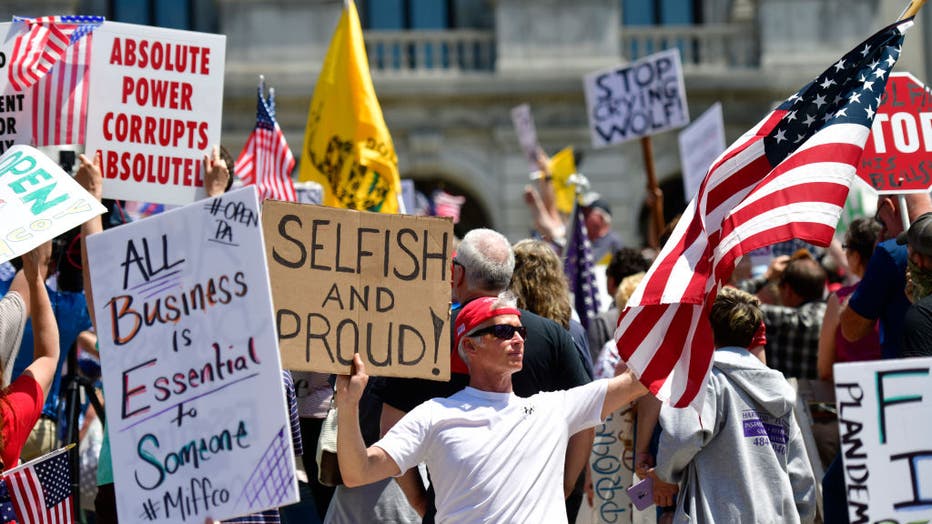Areas in US with no social distancing policy at risk of ‘exponential spread’ of COVID-19, study says
LOS ANGELES - According to a recent study published in the peer-reviewed journal Health Affairs, areas in the U.S. which follow no social distancing policy are at risk of a rate of COVID-19 spread 35 times greater than areas that did implement social distancing.
Researchers considered various social distancing policies implemented by authorities, including large event bans, school closures, closures of entertainment venues, gyms, bars and restaurant dining areas, as well as shelter-in-place orders (SIPOs) when evaluating the impact of such measures on the rate at which the coronavirus has spread across the U.S.
RELATED: NYU researchers publish study casting doubt on accuracy of rapid COVID-19 test used by White House
Looking at confirmed coronavirus cases in more than 3,000 counties around the country between March 1 and April 27, researchers found that shelter-in-place orders were generally the last policy to be implemented and adoption of the policy was “uniformly lower than the other policies.”
Using a coronavirus tally provided by Johns Hopkins Center for Systems Science and Engineering, researchers found that areas that adopted government-imposed social distancing measures lasting at least 16-20 days “reduced the daily growth rate by 9.1 percentage points.”
“Holding the amount of voluntary social distancing constant, these results imply 10 times greater spread by April 27 without SIPOs (10 million cases) and more than 35 times greater spread” without any social distance measures.

FILE - Demonstrators rally outside the Pennsylvania Capitol Building to protest the continued closure of businesses due to the coronavirus pandemic on May 15, 2020 in Harrisburg, Pennsylvania. (Photo by Mark Makela/Getty Images)
Until a vaccine is made available to the public, medical experts have repeatedly urged social distancing as the best practice for combating the spread of COVID-19.
“Our paper illustrates the potential danger of exponential spread in the absence of interventions,” the researchers added.
U.S. states are beginning to restart their economies after months of paralyzing coronavirus lockdowns, but it could take weeks until it becomes clear whether those reopenings will cause a spike in COVID-19 cases, experts said Wednesday.
RELATED: CoronavirusNOW.com, FOX launches national hub for COVID-19 news and updates
The U.S. Centers for Disease Control and Prevention announced on Twitter that after analyzing 13 different forecasting models of potential COVID-19 deaths in the U.S., all models indicate an increase in coronavirus fatalities in the coming weeks with a cumulative death toll exceeding 100,000 by June 1.
The outbreak’s trajectory varies across the country, with steep increases in cases in some places, decreases in others and infection rates that can shift dramatically from neighborhood to neighborhood.
RELATED: CDC says all models forecast increase in COVID-19 deaths in coming weeks, exceeding 100K by June 1
“Part of the challenge is although we are focused on the top-line national numbers in terms of our attention, what we are seeing is 50 different curves and 50 different stories playing out,” said Thomas Tsai, assistant professor at the Harvard Global Health Institute. “And what we have seen about COVID-19 is that the story and the effect is often very local.”
A handful of states started easing their lockdowns about two weeks ago, ranging from shopping malls in Texas to beach hotels in South Carolina to gyms in Wyoming. Georgia was one of the first states where some businesses were allowed to open their doors again, starting April 24 with barber shops, hair salons, gyms, bowling alleys and tattoo parlors.
The Associated Press contributed to this report.


